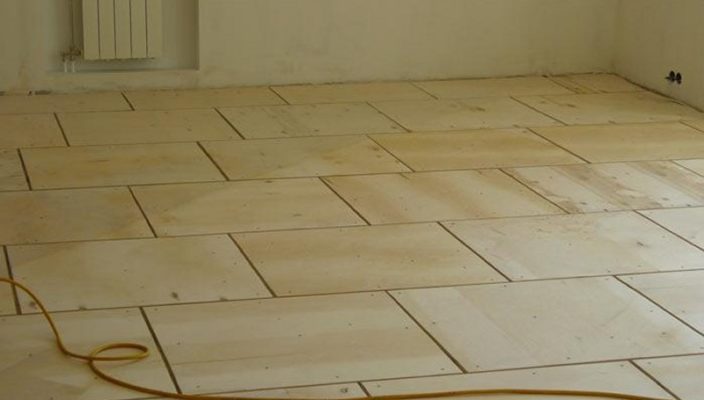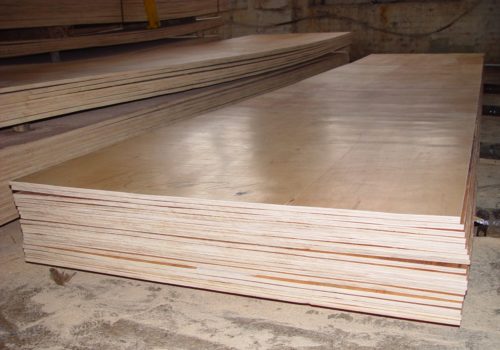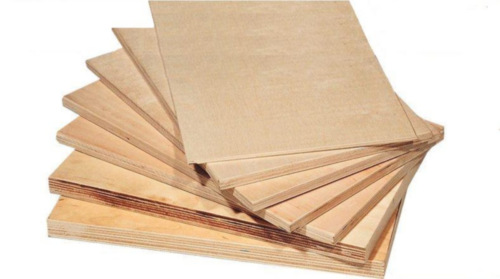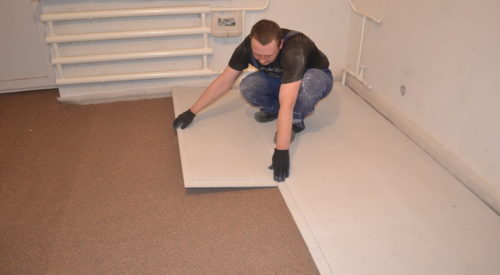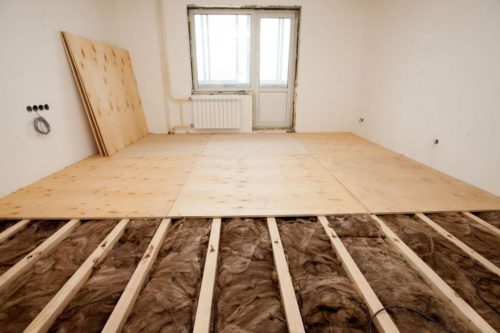Alignment of the floor plywood is an affordable and effective solution for most of our compatriots. Especially important is for the old base of wood.
Content
Characteristics of plywood for floor alignment
A smooth base is an integral condition for most modern flooring. Laminate, parquet board, cork require compliance with this condition. This is due to the fact that the panels are connected with the castle.
With an uneven base, the lock connection loses strength. A crack appears in which dirt and moisture falls. This becomes the cause of further destruction of the floor covering. For this reason, the technology alignment technology plywood is applied.
This material is characterized by:
- slight weight;
- excellent flexibility;
- maximum strength;
- resistance to mechanical loads;
- magnificent heat-insulating properties;
- lack of smell;
- sufficient moisture resistance;
- easy processing;
- the minimum number of garbage during installation work.
With the help of plywood, a quick and simple alignment of the base is carried out. If there are significant areas, it is better to use large sheets of material.
The only nuance is that the floor plywood is not suitable in rooms with frequent and sharp temperature differences.
Criteria for selecting plywood for floor alignment
The choice of material affects the type of finishing flooring. When laying carpet or linoleum, you can use thin sheets. If parquet or laminate is used, the minimum plywood thickness for floor alignment should be 1 cm.
Depending on the moisture resistance, there are the following plywood brands:
- FBA. Differs low moisture resistance and better ecology. Suitable for leveling surface in residential rooms.
- FC. It is characterized by an average moisture resistance. A direct moisture hit is not recommended for such a fane.
- FSB. High resistance to the impact of a wet environment.
- FB. The content of bakelite varnish makes the material most moisture-resistant. But in contact with the system of a warm floor, the material is capable of separating harmful substances.
Based on the requirements of the State Standard (GOST), plywood happens:
- First grade. The material of the highest quality without defects. The perfect option for work, but is too expensive.
- Second grade. The presence of wood inserts, dents and scratches (up to 5% of the leaf area), a slight seeping of glue (up to 2% of the surface of the sheet). The best solution in terms of price and quality ratio.
- Third grade. Plywood may consist of thoroughly and dropped bitch.
- Fourth grade. Low quality products with the presence of defects arising from their production. Is unsuitable for floor alignment.
Features of Plywood for the floor are also being produced in a polished and unlipped form:
- Sh1 denotes the grinding of the material on one side;
- S2 - plywood is grounded on both sides;
- NSh - unlocked products.
Grinding plywood contains 2 more designations, which indicate the presence in the material of formaldehyde:
- E1 - less than 10 mg / 100 g;
- E2 - 10-30 mg / 100 g.
When buying plywood pay attention to the number of layers in the sheet. The most optimal option is a thickness of 12-16 mm with 9-11 layers.
Preparatory phase of floor alignment plywood
At this stage are carried out:
- applying primer on base;
- processing of wooden elements by means of fungal diseases and pests;
- verification of communication systems that are located under the floor;
- cutting sheets;
- marking of the base.
The primer is chosen with the highest solvent content, making the composition characterized as high as possible penetrating ability.
Cutting standard sheets (1.25 * 1.25 m) pursues two objectives:
- With smaller pieces (0.6 * 0.6 m) it is more convenient to work.
- Creating a larger amount of deformation seams required for rooms with high humidity.
At the preparatory stage, the characteristics of plywood can be improved. For example, increase the moisture resistance of the material. For this, the sheets are impregnated with putty, which contains polyvinyl acetate. After thorough drying for 3 days at room temperature, the phaneer is covered with an antiseptic.
Improve product strength can be used by using acrylic varnish. It is applied by two layers.
There are two main floor alignment methods:
- without flooring lag;
- using lag.
Alignment of plywood surface without lag
This process can be carried out with:
- special glue;
- adjusting racks.
Special glue
Laying plywood on the floor using glue is carried out in the presence of a dry screed with a slight drop of heights. The absence of condensate is checked by covering a small section of the surface with a polyethylene film, which is cleaned after 3 days.
Stages of work:
- from the bottom, all garbage and dust are removed;
- old floor is ground;
- sheets are covered with glue and fit on the base;
- final fixation of plywood is carried out using self-tapping screws or anchor bolts (step of screwing - 0.2-0.25 m)
- surface grinding.
Immediately you should prepare pieces of plywood for mounting in the corners and doorways. In these places, the laying of the material is made with a gap to 1 cm. It is left near the wall with a thickness of more than 1.5 cm. Due to this, there is a unimpeded movement of air. This will increase the service life of the coating.
Adjustment racks
Now about how to align the floor plywood with the help of adjusting racks. This technology is more complex. But it is more efficient when aligning the surface:
- based on the base;
- they are hung on several nuts with washers (supports under the sheets);
- plywood stacked over the studs;
- the height of the sheets is recorded by a wrench.
Adjusting racks allow you to put the plywood in two layers. Their use will make the design maximum resistant to mechanical loads. In addition, with the help of racks, it is easy to dismantle the floor covering during repair work.
If the floor has a height difference more than 1 cm, then it is better to use lags to align it.
Alignment of plywood floor using lag
Work begins with surface cleaning from dust, dirt and fine garbage. On the base, the waterproofing polyethylene film with an adhesive to 20-25 cm is settled.
A bar is used as a lag. Its size depends on the width of the room:
- up to 2 m - cross section of bar 11 * 6 cm;
- up to 3 m - 15 * 8 cm;
- up to 4 m - 18 * 10 cm.
Laying the first lag is carried out at a distance of 3 cm from the walls and 6 cm from the door. For fixing the lag uses screws or dowel-nails. Lags are stacked on columns that may have different heights (in the case of an uneven base).
For the creation of a crate under Paneru, transverse bars in increments of 0.5-0.6 m are mounted (more accurate dimensions depend on the dimensions of sheets). The joints of the plywood sheets should be located on these bars. All free space between lags is insulating.
After installing the lag, all wooden elements and plywood are processed by an antiseptic agent. To fix plywood to the crate applied screws with plastic dowels. At the point of screwing the screw, the hole is thrown, the dimensions of which coincide with the diameter of the dowel. For self-press cap, the upper part of the hole is expanding.
Finishing plywood depends on how the floor covering will be used. With linoleum flooring or carpet surface, the surface is covered with 2-3 layers of varnish. If laminate or parquet will be applied, then before coating with lacquer, Phaneur must be seized.

